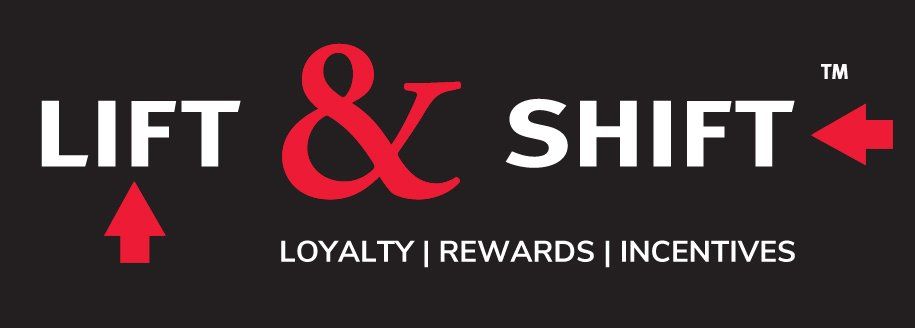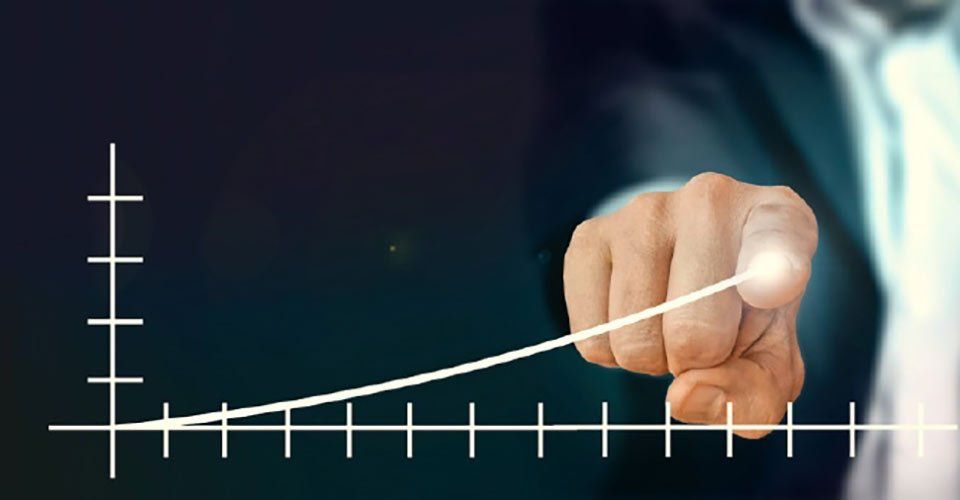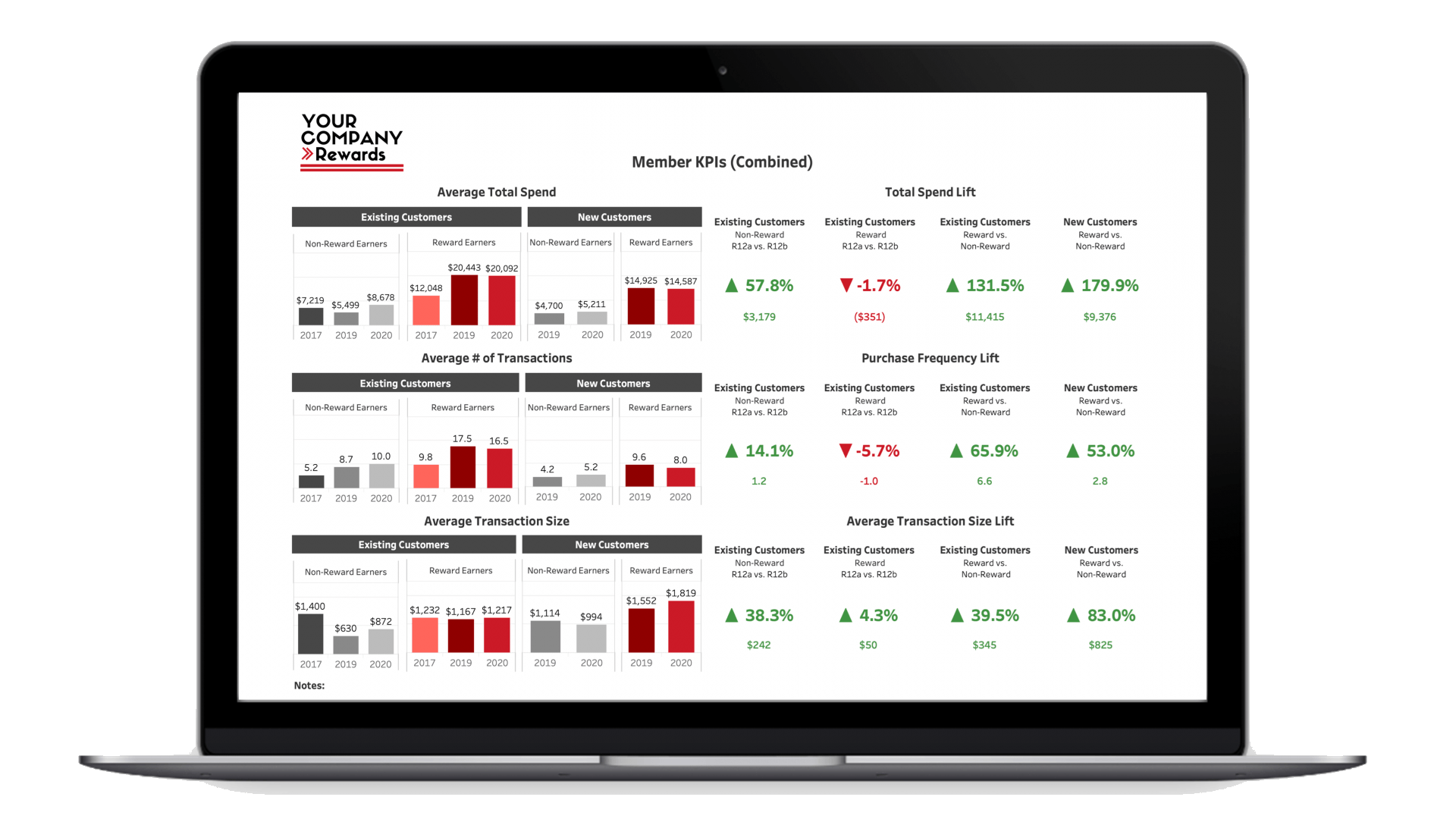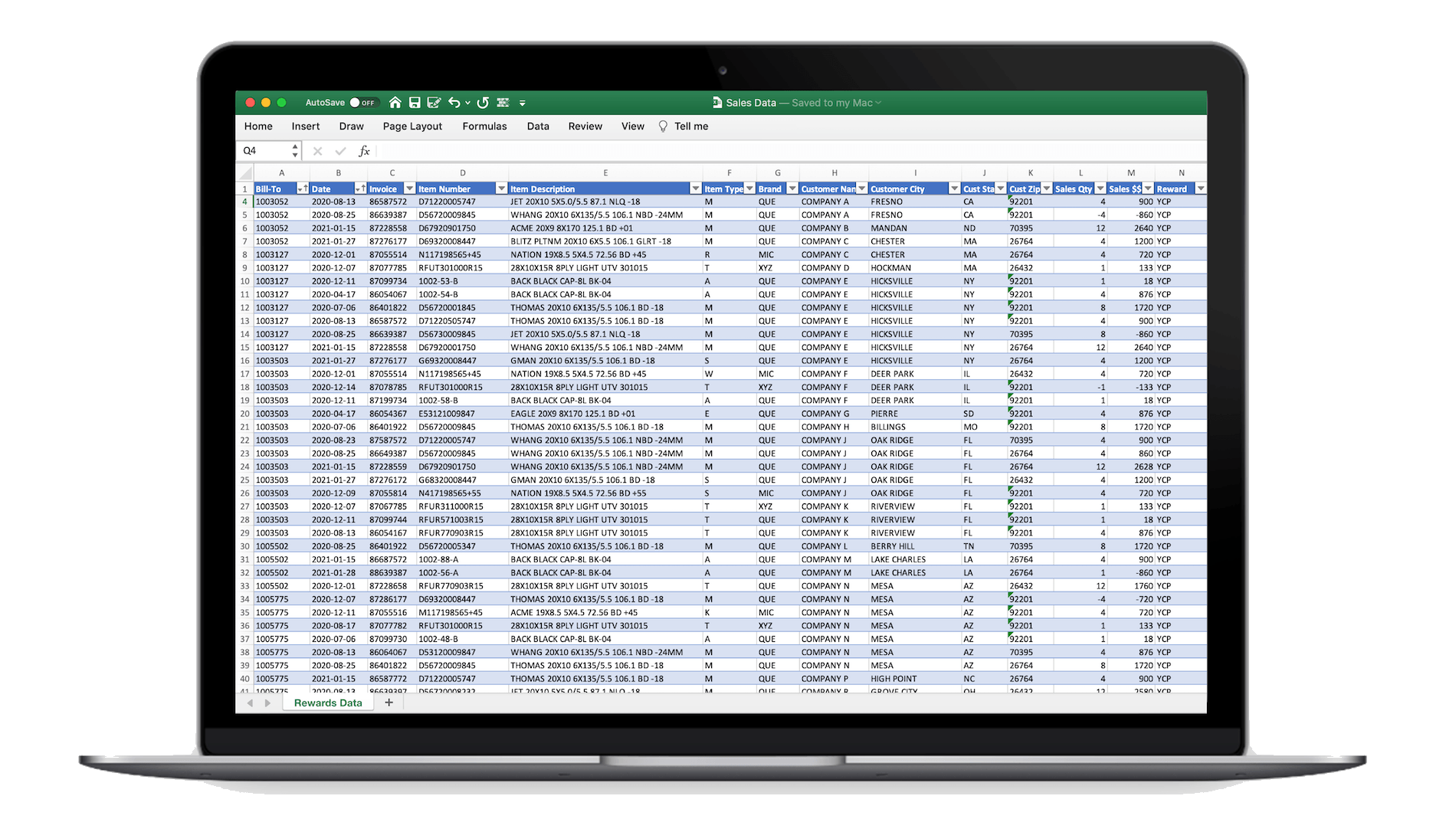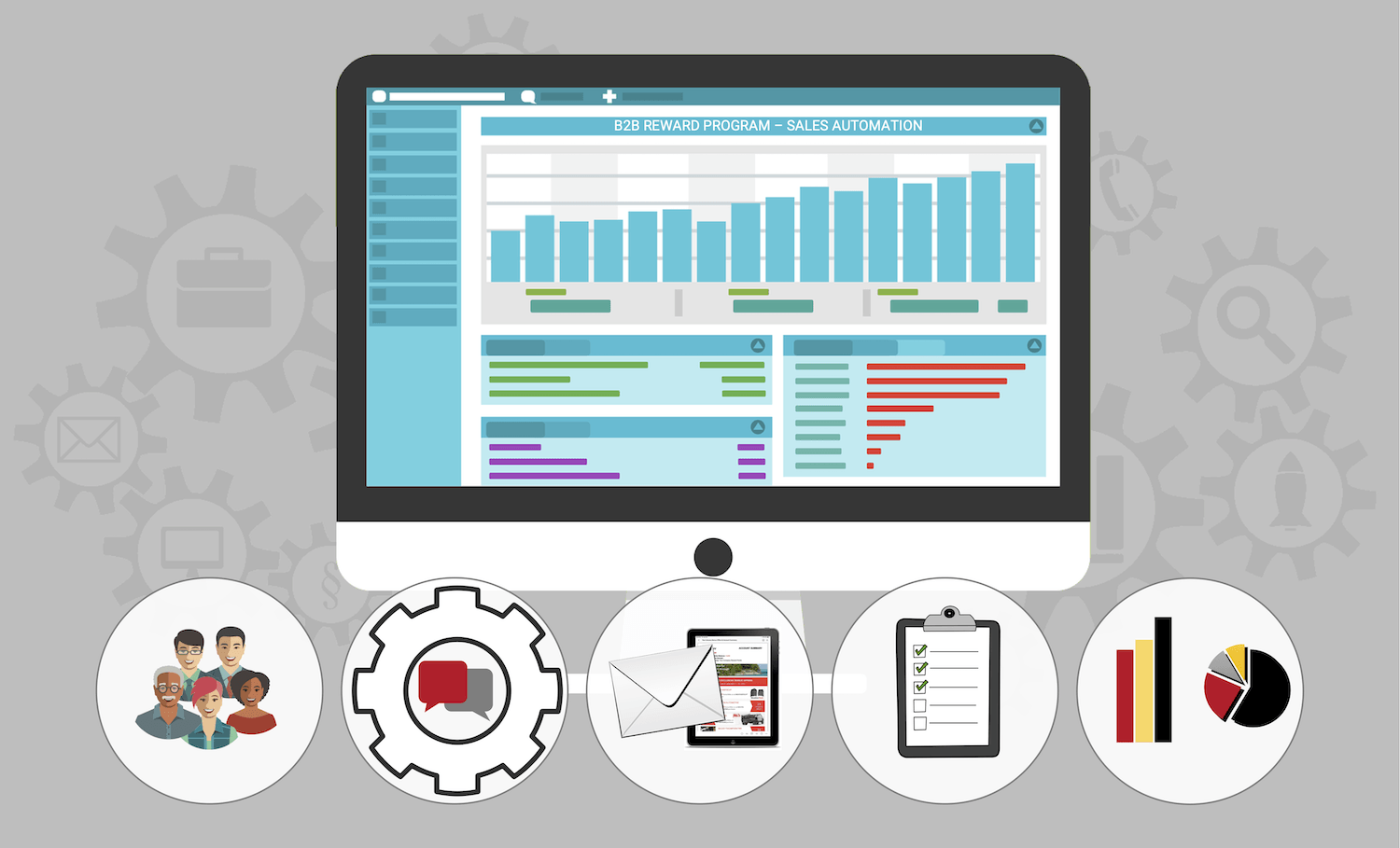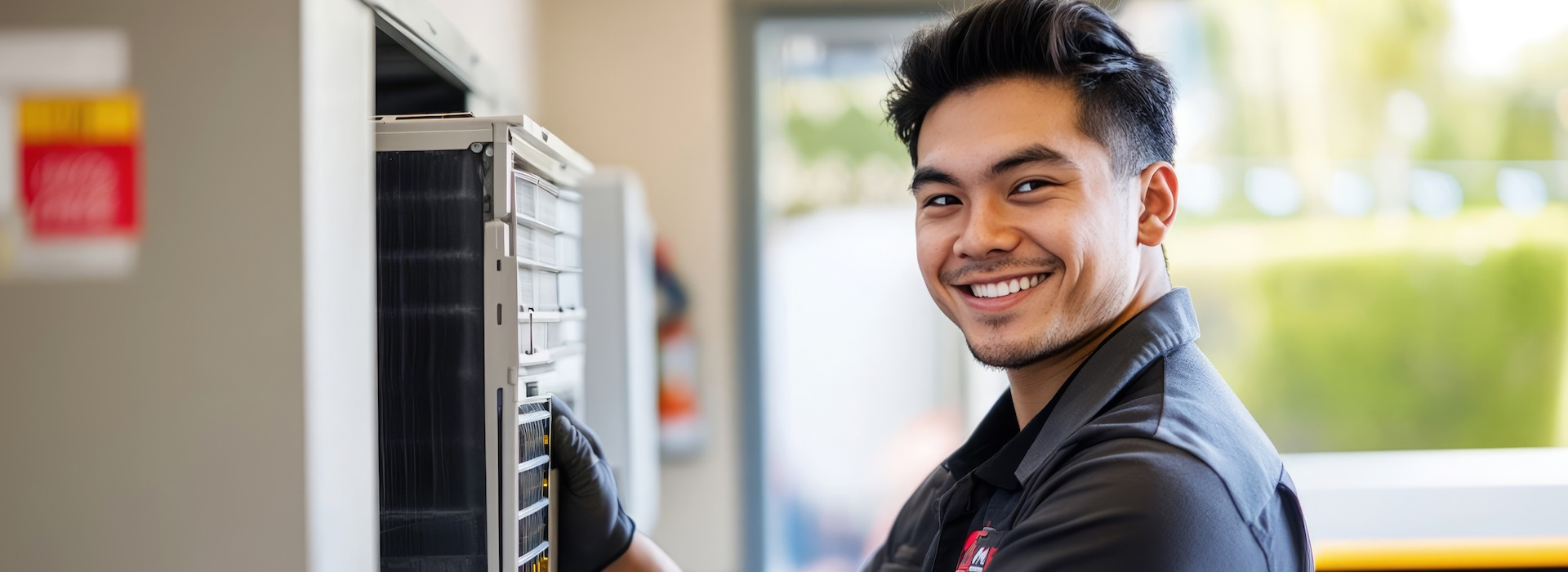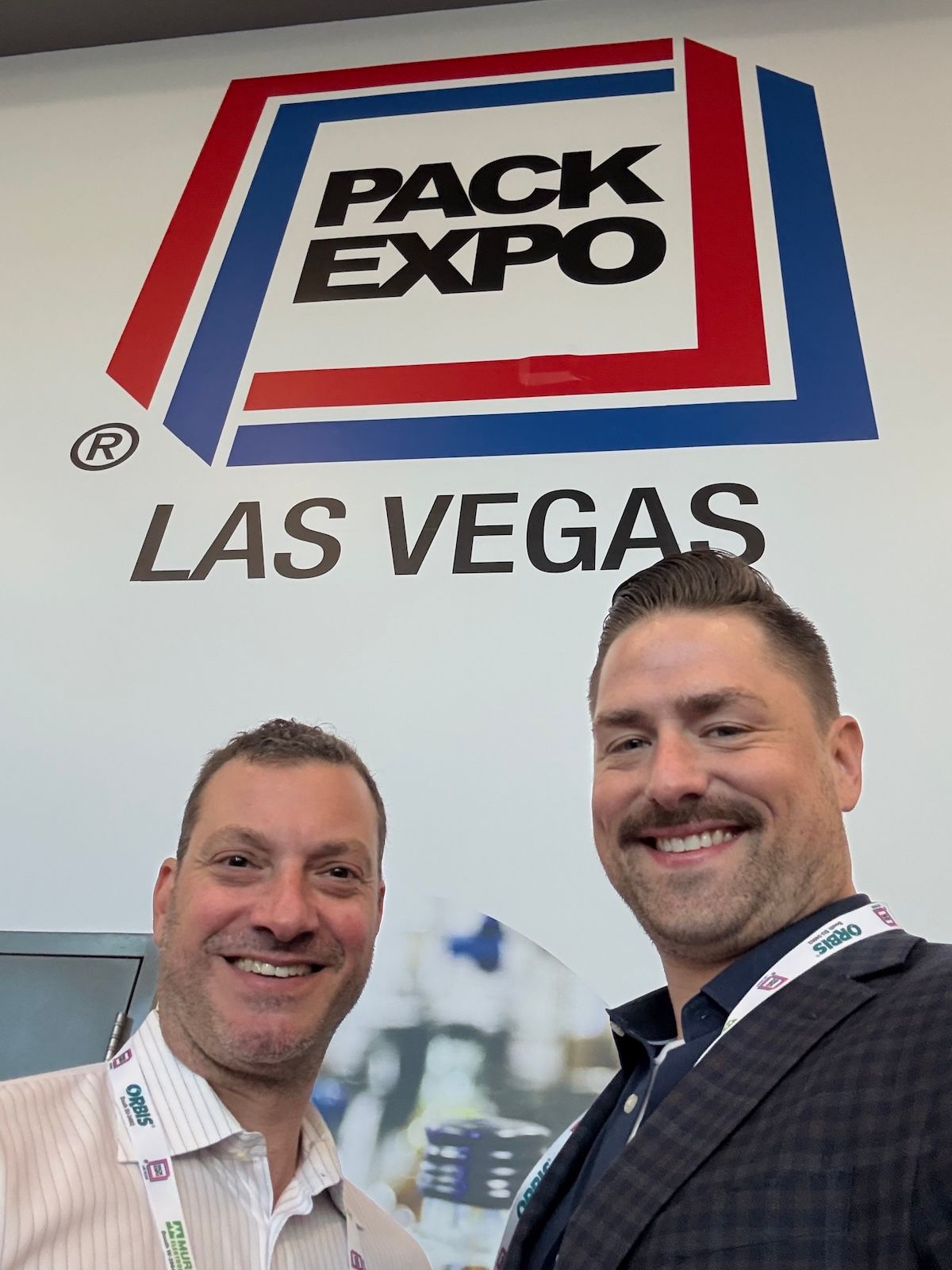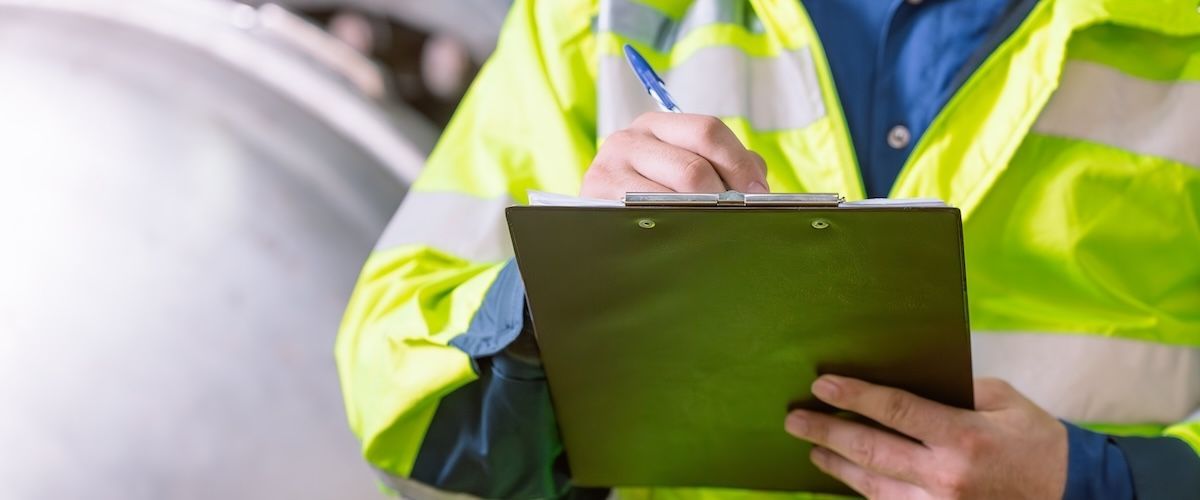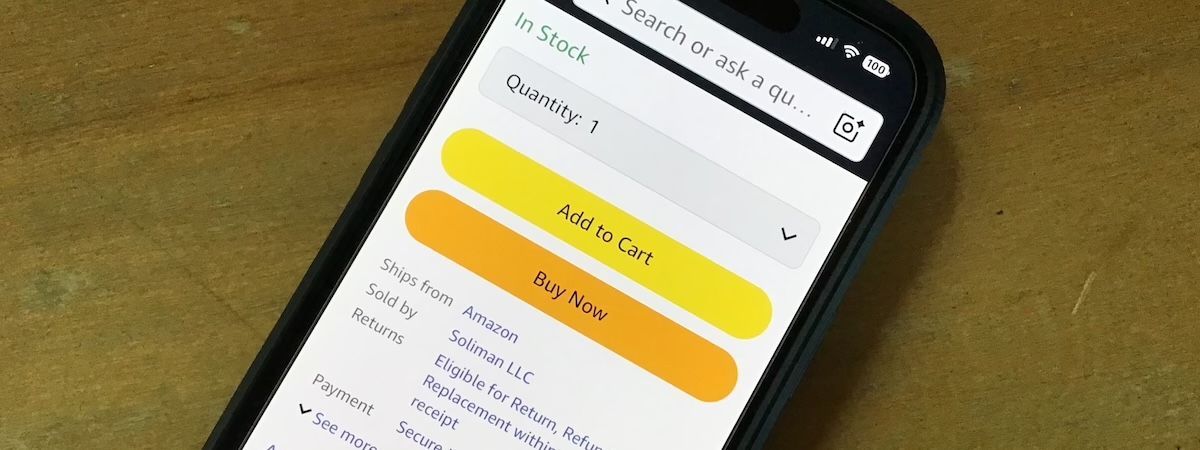Numerous developments over the past five years have transformed the way we conduct business. As a B2B sales leader, you're expected to develop a sales plan that will drive net sales growth, despite any hurdles.
Regardless of how you measure growth from the prior period (quarter-over-quarter or year-over-year), it is imperative that your sales plan incorporates sales tactics that will deliver optimal revenue growth, regardless of the external influences beyond your control. Sales are still happening, and you need to ensure you get your share.
Customer loyalty is key to increasing channel sales. For any B2B company, now is the time for decision-makers to revisit sales strategies and implement a robust growth-based customer loyalty program that supports your sales process automation.
B2B loyalty programs (such as year-end rebates or dealer trips) have been around a long time, but advancements in data analysis and communication technology have resulted in current reward programs becoming one of the most effective and cost-efficient ways to grow sales and deliver unparalleled sales ROI.
Reward program benefits
An
incentive program
is a great way to increase loyalty and channel sales from B2B buyers. Consider the following reward program benefits:
B2B reward programs are highly measurable
A B2B loyalty program leverages your customer data to drive growth
Growth-based B2B reward programs are remotely operated and a key part of sales process automation
How Lift & Shift helps clients grow sales
We segment your customers
Using your sales data, we look for customers with similar purchasing behavior. We can segment each B2B customer right down to the SKU level if needed.
The segmentation process allows us to help you tailor each customer's program experience to be as relevant as possible, thereby increasing customer engagement and response rates.
As detailed in the article "Customer Segmentation Analysis: Strategies for Tailored Marketing Success," segmenting your customers is one of the highest-performing sales growth tactics you can employ.
We develop sales goals and objectives for each customer segment
This is the most critical step in the process. The more time spent developing the most relevant possible goals for each client, the better the results and overall ROI the program will generate.
Table stakes for any growth-based program will include year-over-year growth targets, but each customer segment should also have some tactical growth objectives.
We create a reward offer matrix
Based on your available margins for each type of purchase, we work with you to create purchase-triggered reward offer values for all customer segments and desired purchase outcomes that make economic sense for your business while delivering the highest rate of growth.
We typically employ sales growth tiers, rewarding the customer with increasingly higher reward incentives based on their growth percentage—the more they increase their purchases, the greater their reward levels.
Sales growth of 5-10% is usually very achievable for even well-developed accounts, while smaller accounts that often receive less attention from the sales team can see much more dramatic increases simply because they begin receiving highly relevant sales overtures with incentives tied to each.
Simple regular contact is often enough to encourage customers to direct more spending to you and encourage category switching. In one recent case study, we documented how our client increased sales by over 15% year-over-year and 77% over a five-year period.
There are no firm values that indicate what sales growth rate is good or bad because the rate of growth is relative for each company. Factors such as industry, company size, sales goals and the competitive landscape can play into the calculations; however,
Stocktopedia suggests that a range of 5-10% is a good benchmark.
A good rule of thumb is to reward customers in line with the value of the purchase outcome to your bottom line—a mentality of “I’d pay X to receive Y” is never a bad idea.
Rewarding customers for their purchases isn’t the only way to grow your sales using a B2B reward program. We also suggest adding customer referral incentives.
Your existing customers are often members of industry peer performance groups. These groups can be an excellent resource for new customers, and your customers will be even more inclined to recommend you to their peers if they understand they will be rewarded for doing so. A two-way offer will reward new customers for making an initial purchase with you and also reward your existing customers when the transaction occurs.
We deploy highly targeted reward offers to your customer segments
As McKinsey & Company outlines in their study,
Sales Growth: Five Proven Strategies from the World’s Sales Leaders (2nd edition), a proven sales strategy among global sales leaders is to sell in a way that is relevant to your customers.
Using an automated and data-driven communication platform, we highly personalize each customer’s monthly/weekly reward communication to reflect their key program metrics for the best possible customer experience.
These metrics include:
- Rewards earned to date
- Rewards available to redeem
- Redemption suggestions
- Ongoing long-term reward opportunities tied to growth targets
- Limited-time reward offers tied to short-term tactical sales objectives
Each item is configured for maximum impact with each customer, increasing communication relevancy and customer value.
We measure your program-related growth and ROI
Using our client’s previous year(s) sales data, we track variations in spending by both reward and non-reward customers. In aggregate, across many programs, we see that reward customer spending tends to dramatically outpace non-reward customers.
One pandemic-related impact on program measurement has been the need to use normalized sales data as much as possible. Given the wild sales swings many companies have seen over the past few years (good and bad), we will often introduce the idea of using pre-pandemic data as a benchmark for post-pandemic sales targets. In doing so, program results are not as skewed by volatile market conditions.
Using the incremental sales and available margins delivered by participating reward customers, we can easily deduct the related reward costs to ascertain a clear program ROI. And because we employ offer values that reflect the available margins, program ROI is always excellent, and the increased profit from the incremental purchases by program participants pays for the costs of the reward program many times over.
If you are looking to deliver improved sales growth and a higher profit on your income statement,
reach out to us and we can show you how a growth-based B2B rewards program will do just that.
The Ultimate Guide to B2B Loyalty Programs
This article is part of a series covering how growth-based loyalty programs can elevate sales and company profits by incentivizing current customers to spend more, attracting new customers with appealing rewards, and motivating your sales team.
Lift & Shift™ offers a powerful proprietary B2B reward platform that can help your company leverage its sales data to drive incremental purchases with customers and channel partners or motivate sales staff. We work with manufacturers, distributors, and service providers to analyze sales data, improve efficiencies, accuracy, service levels, and other valuable targeting opportunities.
We create and deliver highly relevant offers to customers, in-house sales staff, or sales associates, motivating your target audience to respond using a wide array of appealing reward options as influencers. Our performance-based reward structures deliver an unparalleled return on investment, with absolutely no wasted budget.
Our customizable reward platform enables clients to easily benefit from a robust loyalty reward program. It's affordable and includes Lift & Shift’s turnkey professional program administration. We take care of everything, so you can focus on your key initiatives.
